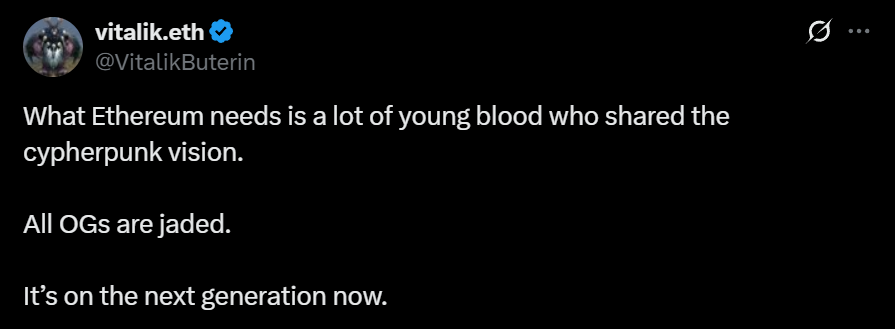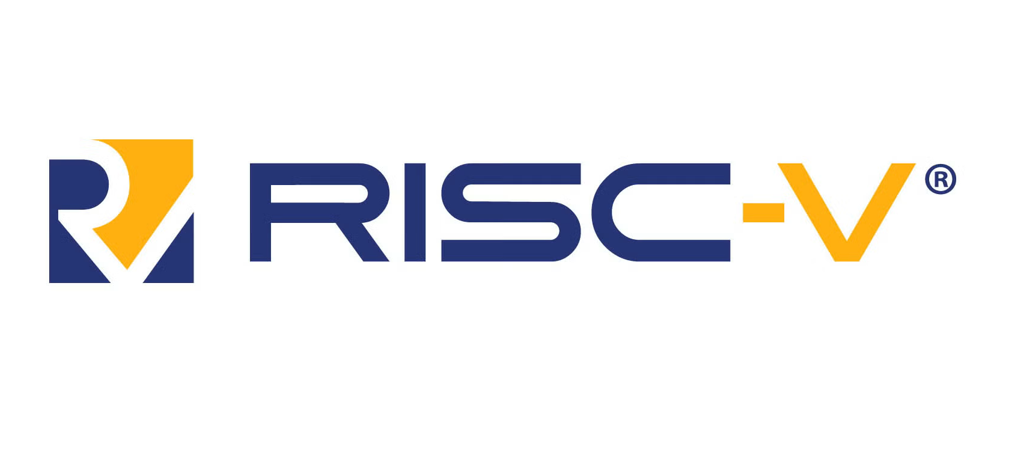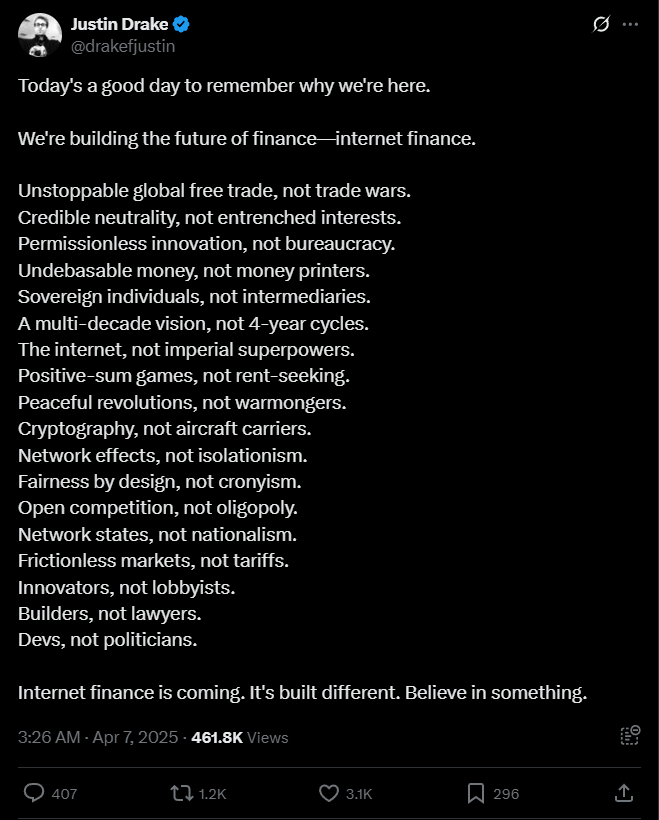Going All In On Cypherpunk: Vitalik Doubles Down On First Principles

April 29, 2025
7 min read

The past few years in crypto have been, as always, full of contradictions. While adoption surged among traditional finance and national governments, including the U.S., the philosophical engine driving crypto seemed to stall, revealing a growing dissonance between use and purpose. After all, becoming integrated into the TradFi system is about as far as you can get from crypto’s original ideals. In other words, we’re facing something of an identity crisis in Web3.
From the beginning, the purpose was supposed to be clear. Satoshi Nakamoto baked it into Bitcoin’s genesis block with a stark message:
“The Times 03/Jan/2009 Chancellor on brink of second bailout for banks.”
It was a pure cypherpunk rallying cry—a call for sovereignty, neutrality, and trustless systems. Ethereum’s founder, Vitalik Buterin, has often cited that moment as a profound source of inspiration. But as time passed, it became harder to ignore a widening gap between the values the crypto industry claimed to champion and what it actually produced.
In the noise of 2023–2025, amid a frenzy of new L1s, L2s, and memecoins making headlines, it's easy to forget the original ethos. Web3 was never meant to be a race for speed, transaction counts, or liquidity share. It was about creating systems where power and trust were minimized by cryptography and where superficial success was less important than the sovereignty and neutrality (and friends we made along the way).
As DeFi Dave captured poignantly in his essay Reject Marketing, Return to Lorebuilding:
"What we see today are surface-level goals that attract mercenary participants. Metrics that once indicated progress have been gamified into irrelevance. Users are treated as data points to optimize, rather than souls to inspire. It was a Faustian bargain, and it's led us here, into churn and disillusionment."
This collective disillusionment has become impossible to ignore. Now, leaders like Vitalik Buterin have recognized the urgent need for a reset—a return to first principles.


The above copypasta Vitalik shared on X and the reply perfectly summarizes the current duality—the whole point of crypto is the OG ethos of privacy and freedom, but satisfying value capture is still a prerequisite to continued relevance and perhaps existence (c'est la vie).
Because of this, Ethereum is reasserting itself as the network for a future that demands privacy and resilience while still addressing how to increase the monetary reflection of that value we’ve all come to enjoy. This is not going to happen through marketing campaigns, “narratives,” or cosmetic upgrades, but through fundamental changes to the protocol.
Ethereum’s next evolution rests on two transformative breakthroughs:
- A radical shift toward a privacy-first architecture, ensuring user protection through cryptographic guarantees, not regulatory goodwill.
- A bold reimagining of the execution layer, with plans to adopt RISC-V–based zkVMs, enabling orders-of-magnitude improvements in scalability without sacrificing decentralization.
These changes aren't simply about Ethereum keeping up with all the Joneses. They represent Ethereum's renewed commitment to setting non-negotiable principles that will define the next era of the world computer: an internet where freedom, neutrality, and trust minimization are non-negotiable foundations.
Could Ethereum’s north star act as a revival for the rest of the crypto ecosystem?
Why Ethereum Fell Behind—and How It's Turning the Ship

(Not financial advice)
Over the past two years, Ethereum faced mounting criticism for stagnation as newer chains like Solana captured developer attention and user momentum. While Ethereum stayed technically dominant, it struggled with perceptions of complacency, bureaucracy, and a research culture disconnected from immediate needs. App activity on Layer 1 slowed, and growth flowed into alternative chains and Layer 2s without clearly strengthening Ethereum’s core. Many felt Ethereum's north star had dimmed just as real-world adoption was accelerating.
The root cause was structural: Ethereum’s decentralization, long its greatest strength, created blind spots. No entity owned responsibility for product experience or user growth, while researchers focused on long-term visions and rivals optimized for present-day adoption.
Today, that is changing. Core leadership, especially within the Ethereum Foundation, is prioritizing short- and medium-term plan execution. Layer 1 scaling is now treated as an urgent necessity, with roadmap updates like aggressive gas limit increases, fast block confirmations, and ZK-proof adoption being delivered on real timelines.
Ethereum’s comeback strategy is simple: scale Layer 1, improve developer and user experience, and reignite direct economic activity on the base layer—while preserving decentralization, neutrality, and cryptographic integrity. If successful, Ethereum will not just defend its lead but emerge stronger, proving that principled systems built for the long haul ultimately win.
The Roadmap to Preserve Both Layer 2 Scaling and ETH Value
Vitalik Buterin’s latest Ethereum roadmap doubles down on scaling through Layer 2 rollups, while strengthening ETH’s value capture at the core of the ecosystem. Rather than abandoning the modular L2 approach for massive L1 expansion, Vitalik emphasizes accelerating L1 upgrades like blobspace scaling (for cheap data availability) and moderate gas limit increases. At the same time, the roadmap calls for improving Layer 2 security, standardizing interoperability between rollups, and making cross-chain UX seamless—ensuring that using Ethereum still feels like operating on a unified network. This dual strategy reinforces Ethereum’s technical decentralization while fostering a more interconnected and accessible ecosystem, just as millions of new users enter through applications across finance, social, and enterprise sectors.
To ensure Ethereum’s growth directly benefits ETH holders, Vitalik proposes a multi-pronged economic plan. ETH should remain the primary collateral and transaction asset across both L1 and L2s, with L2s encouraged to burn or redirect a portion of their fees back to Ethereum. Future upgrades like raising the blob count could also drive significant ETH burning, strengthening its scarcity and monetary premium. Instead of allowing Layer 2s to siphon value without accountability, Ethereum’s roadmap now explicitly prioritizes ETH's economic centrality even as scaling disperses transaction activity outward. In this way, Ethereum aims to stay true to its cypherpunk ethos of decentralization while ensuring that its base asset—ETH—grows stronger as the network matures.
Vitalik’s Guiding Philosophy: Privacy as Freedom, Order, and Progress
Vitalik Buterin's latest post, "Why I Support Privacy," is more than an essay—it's a manifesto for the future of the open internet. Privacy, he argues, isn't about hiding; it's about preserving the freedom to live, innovate, and participate without fear of manipulation by opaque powers.
In a world where AI surveillance is normalizing mind-reading technologies and where global data concentration breeds techno-hegemony, Ethereum's commitment to programmable privacy is a direct counterforce. Zero-knowledge proofs (ZKPs), fully homomorphic encryption (FHE), and on-device AI are not academic luxuries—they are necessary defenses for individual autonomy in the coming decades.
Vitalik reminds us that privacy is essential for:
- Freedom: Protecting the space for human variance and dissent.
- Order: Preventing the collapse of institutions into bribery, coercion, and chaos.
- Progress: Unlocking personalized medicine, safe AI assistants, and cross-border collaboration without sacrificing sovereignty.
Ethereum is preparing to bake privacy into the network fabric, using innovations like Privacy Pools, proof-of-personhood protocols, and fully private off-chain computation. These are not just "features" — they are shields against an increasingly dystopian default.
"Privacy gives you the freedom to live your life in a way that best suits your personal goals and needs, without constantly playing the public game." — Vitalik Buterin
RISC-V: Scaling Ethereum for the Century Ahead

Parallel to the privacy push, Ethereum’s founder seems eager to undergo its most radical execution layer upgrade yet: replacing the EVM with RISC-V.
This isn't about abandoning Solidity, accounts, or cross-contract calls. It's about rewriting the low-level foundations to enable massive scalability. Instead of proving inefficient EVM bytecode execution in zero-knowledge proofs, Ethereum will allow contracts to be written (and proven) directly in RISC-V — a standardized, efficient, and open instruction set.
The desired result?
- 50x to 100x improvements in prover efficiency, critical for ZK-rollup performance.
- Simpler, lighter execution layer specs, reducing long-term maintenance risks.
- Better resource utilization, allowing Ethereum to handle orders of magnitude more economic throughput without sacrificing decentralization.
In simple terms: Ethereum could become far faster, cheaper, and easier to verify, without losing any of its core values.
Ethereum’s New Mantra: “Believe In Something”
Over the past two years, narratives have swung wildly. Alternative L1s surged, and new L2s launched weekly. But Ethereum’s focus wasn’t to win headlines — it was to build the most resilient financial layer of the internet.
Vitalik's repost of a powerful vision statement earlier this month reminds us why Ethereum was built:

As the world slides toward protectionism, surveillance capitalism, and regulatory overreach, Ethereum's defense of open cryptographic systems is not idealism. It is survival.
The Path Ahead
Ethereum's renewed focus on privacy and its audacious technical pivot with RISC-V are not just upgrades. They are reassertions of first principles — the principles of Web3.
In the decade to come, the battle will not be "fast chain" versus "slow chain." It will be:
- Chains that empower individuals versus chains that extract them.
- Systems designed for censorship resistance versus systems vulnerable to political pressure.
- Open, verifiable computation versus opaque corporate trust.
With this revamp, Ethereum could possibly position itself to not only survive but once again lead the next wave of internet finance.
Join the Conversation on Our Channels!
Twitter | Telegram | Substack | Discord | YouTube | LinkedIn | Reddit | All Links



